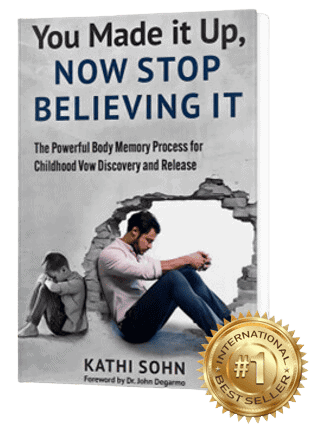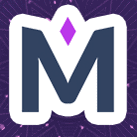
Today, we have the pleasure of speaking with Kathi Sohn, a retired U.S. Defense Department employee who has dedicated her post-retirement career to promoting the Body Memory Process, a transformative approach to uncovering and releasing self-limiting beliefs formed in early childhood. With a deep understanding of the mind-body connection and years of apprenticeship under her late husband, Kathi offers profound insights into how our early experiences shape our present realities and how we can liberate ourselves from their constraints. MysticMag has the pleasure.
Can you please introduce yourself to our readers and share a few details about your professional journey?
My name is Kathi Sohn and I retired in 2020 from 36 years of service with the U.S. Defense Department. Ever since, I have been promoting what was my late husband’s powerful work to help hundreds of people discover and release self-limiting and sometimes self-destructive beliefs they created in early childhood. I studied and apprenticed with David during the 25 years we were married and deeply learned the work, called the Body Memory Process.
What ideas and principles do you base your coaching on?
My coaching programs are based on the Body Memory Process which was founded on three main research-backed ideas: 1) The mind and body are connected, and our body can tell us what is in our subconscious. The mind/body connection is involved in the formation of beliefs in early childhood, based on emotional events and the perpetuation of those beliefs into adulthood; 2) Our beliefs shape our reality – something taught throughout the ages through religious and scientific sources; 3) Babies and young children are more aware and emotionally connected to their caregivers and their environment than ever before realized.
What is body memory?
Traumatic and emotional memories are stored in what neuroscientists call “implicit memory,” also termed “body memory.” This is the same way your body stores your knowledge of how to ride a bike. Another example is if you’ve ever rented a vehicle where the gear shift is in a different place than what you’re used to and found yourself pawing the air where you think it ought to be. There is another application of body memory that involves a different kind of learning and that is what Dr. Bruce Lipton refers to as programming that happens when young children are in a theta brain wave state and living from their imagination and emotional brain.
Research from the 1980s revealed that memory is chemically bonded when neuropeptides travel from the brain to the body during an emotional experience. These peptides meet receptors that are everywhere in the body and they carry information associated with the emotional event, such as decisions we make about ourselves, others, and life when we are not yet rational. Dr. Deepak Chopra refers to this as “premature cognitive commitments,” where we leap to conclusions before we have enough data to make a fully informed choice. We also close our minds to any future change in perspective.
These decisions give us a false sense of safety and security because now we’ve made our world predictable. These decisions and beliefs, also known as childhood vows, will remain in our bodies until we release the associated energy.
What can you tell me about your Hero’s Journey programs?
My Hero’s Journey Parent Coaching Program provides tools and support for parents to discover and clear emotional triggers from their own childhood that can negatively impact their parenting, to emotionally connect with their child and better handle stress, to get cooperation from their kids without trying to control behavior and to communicate with their child in a way that builds a trusting relationship through the teen years. My Hero’s Journey Personal Coaching Program provides tools and support for people to discover and release their own childhood vows, and then consciously create the life they want.
As a successful author, what books have you written and what are they about?
My book, You Made It Up, Now Stop Believing It, now available in audio format, teaches readers the entire Body Memory Process for discovering and then releasing self-limiting beliefs created in early childhood. Part One, “How You Made It Up,” reveals several real client case studies to both demonstrate how childhood vows show up in people’s lives and explain the basics of how childhood vows are formulated out of womb and birth trauma and during the first seven years of life when children are trying to figure out how to survive in the world.
Part Two, “How to Stop Believing It,” teaches readers the entire Body Memory Process vow discovery, and vow release processes. It also explains the powerful Body Memory Process Body Map which helps decode pain, tension, and disease in terms of where in the body each early childhood decision becomes stuck. The Body Memory Process Body Map itself is a collection of nearly 1000 childhood vows that my late husband recorded during his over thirty years of working with clients and it is available on my website. Part Three, “Conscious Living and Wellness” encourages the reader to consciously commit to wellness, conscious parenting, and sharing their own healing story with the world. I have also been a collaborative author for other books, including Wickedly Smart Women, Unstoppable: Female Entrepreneurs Living Fearlessly, and Faces of Foster Care, Volume II.

Is there anything else about your work that you’d like to share that we haven’t covered?
I am currently creating multi-media resources for people with specific issues to acquire the support they need to discover and release the childhood vows associated with those specific issues. For example, if someone is struggling with losing weight they could review a list of vows that would include there is never enough for me, when I get big nobody will speak to me that way, and if I eat it all, she’ll be happy. I intend to make these resources available on my website for a very low cost. I’m also currently creating a mental health program for teens based on the discovery and release of childhood vows.
To learn more about Kathi and her work, you can visit kathisohn.com



